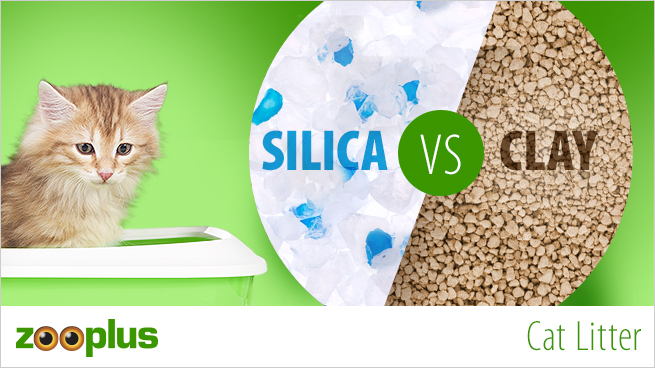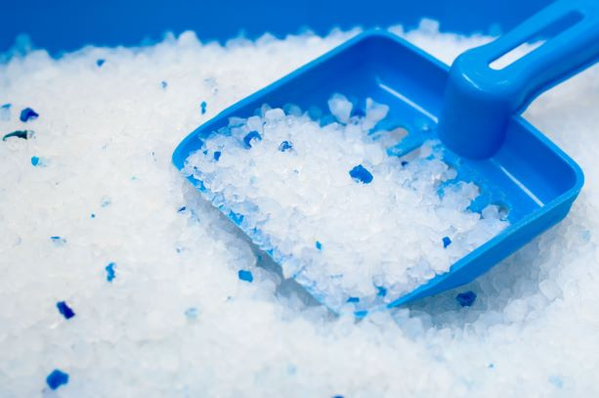As pet owners, we always want the best for our furry companions, and that includes their litter. With the increasing demand for eco-friendly products, many pet owners have turned to crystal cat litter as a solution. But is this solution really as environmentally friendly as it seems?
Crystal cat litter has gained popularity due to its ability to absorb moisture and odors, making it a low-maintenance option for pet owners. However, the manufacturing process and disposal of crystal cat litter raise concerns about its impact on the environment. In this article, we will explore the environmental impact of crystal cat litter and provide insights into alternative options that are both pet-friendly and eco-friendly.

Is Crystal Cat Litter Bad for the Environment?
Crystal cat litter is a popular choice among cat owners because it is highly absorbent and helps control odors. However, some people have concerns about the environmental impact of using this type of litter. In this article, we will explore whether crystal cat litter is bad for the environment and what alternatives are available.
What is Crystal Cat Litter?
Crystal cat litter is made from silica gel, which is a porous and absorbent material. The silica gel is processed into small beads that are designed to absorb moisture and odors. When the litter is used, the beads turn from clear to a color that indicates that they have reached their maximum absorption capacity.
Crystal cat litter comes in different varieties, including scented and unscented, and can be purchased in both non-clumping and clumping options. While it is an effective litter for controlling odors and keeping the litter box clean, some people have concerns about its impact on the environment.
The Environmental Impact of Crystal Cat Litter
Crystal cat litter is not biodegradable, which means that it does not break down naturally over time. When it is disposed of in landfills, it can take hundreds of years to decompose. This can contribute to the buildup of waste in landfills and the release of harmful greenhouse gases.
In addition, the production of silica gel requires a significant amount of energy and resources, including water and electricity. This can have a negative impact on the environment, especially if the production process is not sustainable.
Alternatives to Crystal Cat Litter
If you are concerned about the environmental impact of crystal cat litter, there are several alternatives available. One option is to use a natural litter, such as one made from corn, wheat, or recycled paper. These litters are biodegradable and can be composted or recycled after use.
Another alternative is to use a litter made from sustainable materials, such as bamboo or coconut. These litters are renewable and do not require as much energy or resources to produce as silica gel.
The Benefits of Using Crystal Cat Litter
Despite its potential impact on the environment, crystal cat litter does have some benefits. It is highly absorbent, which means that it can last longer than other types of litter. It also helps control odors, which can make it more pleasant to use.
Furthermore, crystal cat litter is lightweight and easy to handle, which can be beneficial for people with mobility issues or those who have trouble lifting heavy bags of litter. It is also less dusty than some other types of litter, which can be beneficial for people with allergies or respiratory issues.
Cystal Cat Litter vs. Other Types of Litter
When comparing crystal cat litter to other types of litter, there are several factors to consider. While crystal cat litter is highly absorbent and helps control odors, it is not biodegradable and can have a negative impact on the environment.
Other types of litter, such as natural or sustainable options, may be more environmentally friendly but may not be as effective at controlling odors or lasting as long. Ultimately, the choice of which type of litter to use will depend on your priorities and preferences.
Conclusion
Crystal cat litter can be an effective option for controlling odors and keeping the litter box clean. However, it is important to consider its potential impact on the environment and to explore alternative options that may be more sustainable.
By choosing a litter made from natural or sustainable materials, you can help reduce your environmental footprint while still providing your cat with a clean and comfortable litter box.
Frequently Asked Questions
Crystal cat litter has become increasingly popular in recent years due to its odor control and absorbency capabilities. However, concerns have been raised regarding its impact on the environment. In this article, we will answer some frequently asked questions about crystal cat litter’s environmental impact.
1. Is crystal cat litter biodegradable?
No, crystal cat litter is not biodegradable. It is made of silica gel, which is a synthetic material that does not break down naturally in the environment. As a result, crystal cat litter contributes to the buildup of non-biodegradable waste in landfills and can take hundreds of years to decompose.
However, some manufacturers claim that their crystal cat litter can be recycled or reused as a moisture absorber. It is important to check the specific product’s instructions and recycling policies before disposing of it.
2. Can crystal cat litter be composted?
No, crystal cat litter cannot be composted. It contains chemicals and synthetic materials that can contaminate the soil and harm plants. Additionally, the high silica content in crystal cat litter can cause respiratory problems if inhaled.
It is important to dispose of crystal cat litter in the trash and not in the compost bin. Some manufacturers offer eco-friendly alternatives to traditional crystal cat litter, such as those made from recycled paper or plant-based materials, that can be composted.
3. How does crystal cat litter impact the environment?
Crystal cat litter can have a negative impact on the environment in several ways. As mentioned earlier, it is not biodegradable and can contribute to the buildup of non-biodegradable waste in landfills. Additionally, the production of silica gel, the primary component of crystal cat litter, requires a significant amount of energy and resources.
Crystal cat litter can also pose a danger to wildlife if ingested. The small silica beads can resemble food to birds and other animals, leading to digestive problems and even death. It is important to dispose of crystal cat litter properly and keep it out of reach of wildlife.
4. Are there eco-friendly alternatives to crystal cat litter?
Yes, there are several eco-friendly alternatives to traditional crystal cat litter. Some popular options include recycled paper, plant-based materials, and wood chips. These alternatives are biodegradable and compostable, reducing their impact on the environment. Additionally, some manufacturers offer cat litter made from reclaimed materials, such as sawdust or wheat, which can further reduce waste.
It is important to note that eco-friendly cat litter may have different odor control and absorbency capabilities compared to crystal cat litter. It may take some experimentation to find the right alternative for your cat.
5. How can I dispose of crystal cat litter safely?
Crystal cat litter should be disposed of in the trash and not flushed down the toilet. Flushing crystal cat litter can cause blockages in pipes and damage wastewater treatment systems. Additionally, crystal cat litter should not be disposed of in the compost bin or mixed with garden soil, as it can contaminate the soil and harm plants.
When disposing of crystal cat litter, it is important to follow the manufacturer’s instructions and check local regulations. Some areas may have specific requirements for disposing of cat litter, such as using biodegradable bags or placing it in a separate bin.

How-to-Use Non-Clumping Crystal Cat Litter
In today’s world, there is a growing concern for the environment and how our actions impact it. One topic that has recently been brought into question is the use of crystal cat litter. While this type of litter is praised for its odor control and absorption capabilities, many are wondering if it is bad for the environment.
After conducting research and analyzing the information, it is clear that crystal cat litter can have negative effects on the environment. The production process of the crystals involves mining and processing non-renewable resources, which can lead to habitat destruction and pollution. Additionally, crystal litter is not biodegradable and can take hundreds of years to decompose in landfills. As a professional writer, it is important to consider the impact that our daily decisions have on the environment and to make informed choices that prioritize sustainability.
